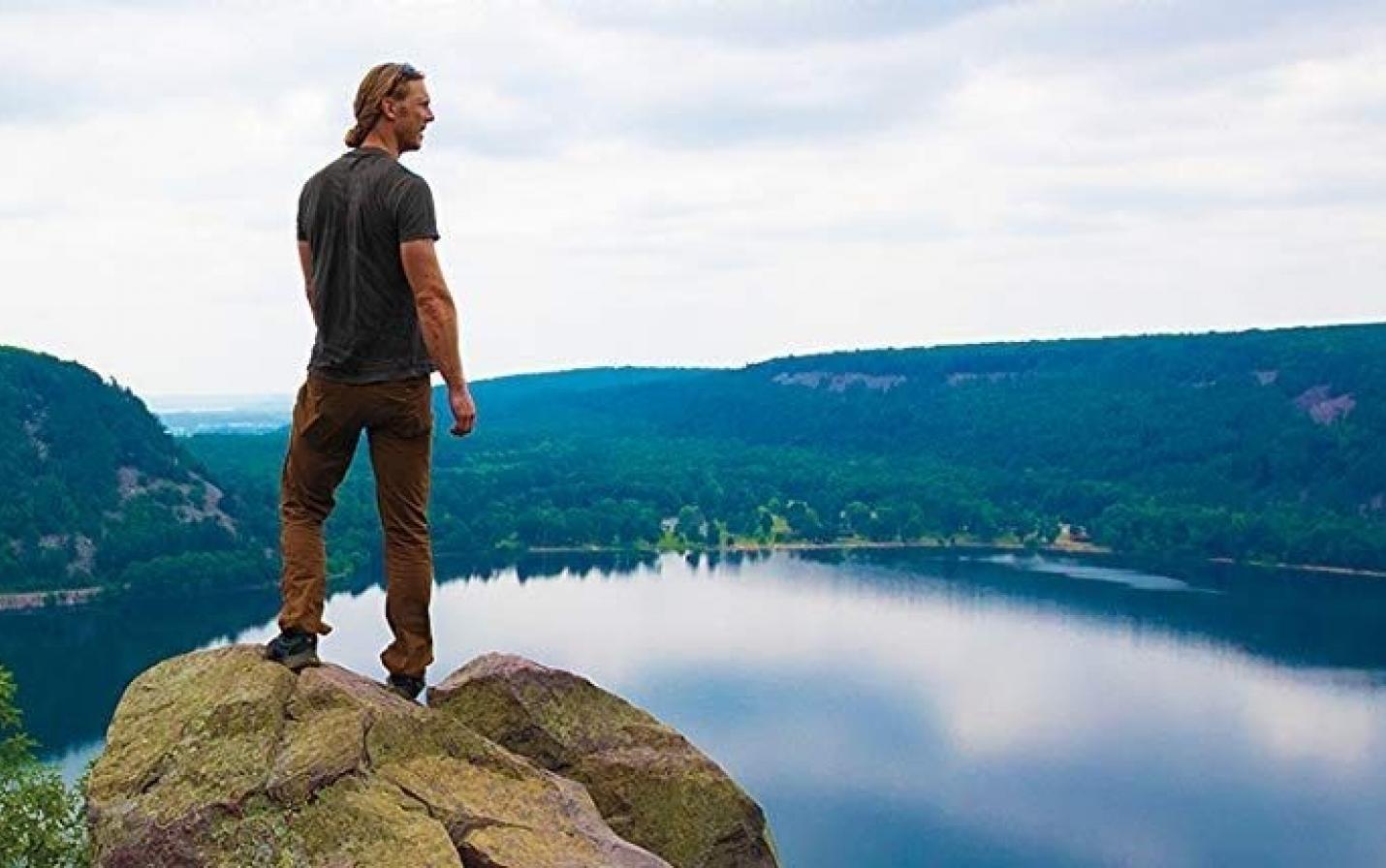
Decoding the Driftless is a short (about 1 hour) documentary about the very area in which the name suggests, The Driftless Area. The Driftless Area is a region in the corners of Wisconsin, Minnesota, Iowa, and Illinois that has long been untouched by glaciers in any of the last ice ages, producing a landscape unlike any other in the United States. The film, directed by Swedish filmmaker, Jonas Stenstrom, takes you on a journey through the Driftless area from the air, on the water, and even underground. It provides a look at the landscape that most people do not have the luck to ever see, all while providing a scientific basis for why the landscape is the way that we see it and some of the stories that can be unfurled through a deeper look. Whether it be Algific Talus Slopes—which are natural vents that produce cold, oftentimes freezing (< 32° F) air from fractured rocks in the landscape and are home to many unique plants and organisms that just cannot be found elsewhere in the world—or deep cave systems that have been carved out through millions of years of erosion that are underneath landscapes that otherwise would be considered nothing other than farmland, Stenstrom and his crew provide a look into an area that many simply would never get to fully appreciate in one lifetime.
Decoding the Driftless provides looks at many different aspects of the Driftless Area such as birds-eye views and history of Effigy mounds that dot the landscape, sinkholes that would be hard to miss as they are plentiful in the area as long as you know what you are looking for, and even the nests of the once almost extinct Peregrine Falcon who make their homes in the steep bluffs that line the Mississippi River Valley. It also provides insight into the Mississippi River and its use as one of the world's great “Flyways” for many different species of waterfowl in the United States.
While Decoding the Driftless is only an hour long, I seem to learn something new every time I have watched it (and I have watched it 4 times in college alone). Being a Biology major, I have a particular interest in nature and this is something that is right up my alley, as well as I would expect it to be for anyone that has a keen interest in the outdoors and is rather familiar with the Driftless Area. However, I watched it with my girlfriend who is not necessarily a Biology nerd like myself and she said that she likely would not watch it again, even though she did think it was interesting and she learned a lot. I feel this documentary is meant more for an audience who has a specific interest in Biology, the environmental sciences and studies, or just a general love and curiosity for the outdoors, while also wanting to gain as much knowledge about the area many of us live in as we can through opportunities that many likely would not be able to experience. While the language that is spoken throughout is relatively simple and well explained, it may be a little more in-depth than someone who doesn’t have a particular interest in the subject would care to listen to. I would have personally liked to see it talk a little more about the broader aspects of the Driftless that make it what it is instead of talking about the more subtle, unique aspects such as the Algific Talus Slopes, in order to pander to a little wider audience.
While there are some critiques about this documentary, I feel that this is the best documentary I have watched about this area. It really goes in depth about some features in the area that just are simply not found elsewhere and that are things that should really be protected through time as they are unique to this area, and being that this area is unique in and of itself, they are also unique to our national landscape. I believe there is a reason for the glaciers not hitting this area and leaving alone the incredible landscape that they left, and I am glad that Stenstrom and his crew were able to document as much of this area as they did because this is an area that should be protected and appreciated for generations to come.
Brady Fernette is a student of environmental literature at the University of Wisconsin-La Crosse